One of the most remarkable Microsoft Teams features is its integration with other Microsoft products. It combines the power of several tools in one platform. Moreover, when you create a new team, you automatically create a Microsoft 365 group. Microsoft Teams goes along with its own SharePoint site, Outlook mailbox, Planner, Yammer, Power BI, and a OneNote notebook. These apps are synced together to allow you and your team to collaborate more efficiently and accomplish more.
In this article we will take a closer look at Microsoft Teams and OneNote integration and how to make the most out of both tools.
What is Microsoft OneNote?
See OneNote as a digital version of a notepad. This app helps you capture your thoughts and ideas, organize them into separate notebooks, sections and pages, share them and collaborate with your teammates.

- All the information stored in OneNote is backed in a cloud and synced across all your devices. You can start taking your notes from a laptop and then easily access and edit them from your mobile device or a tablet.
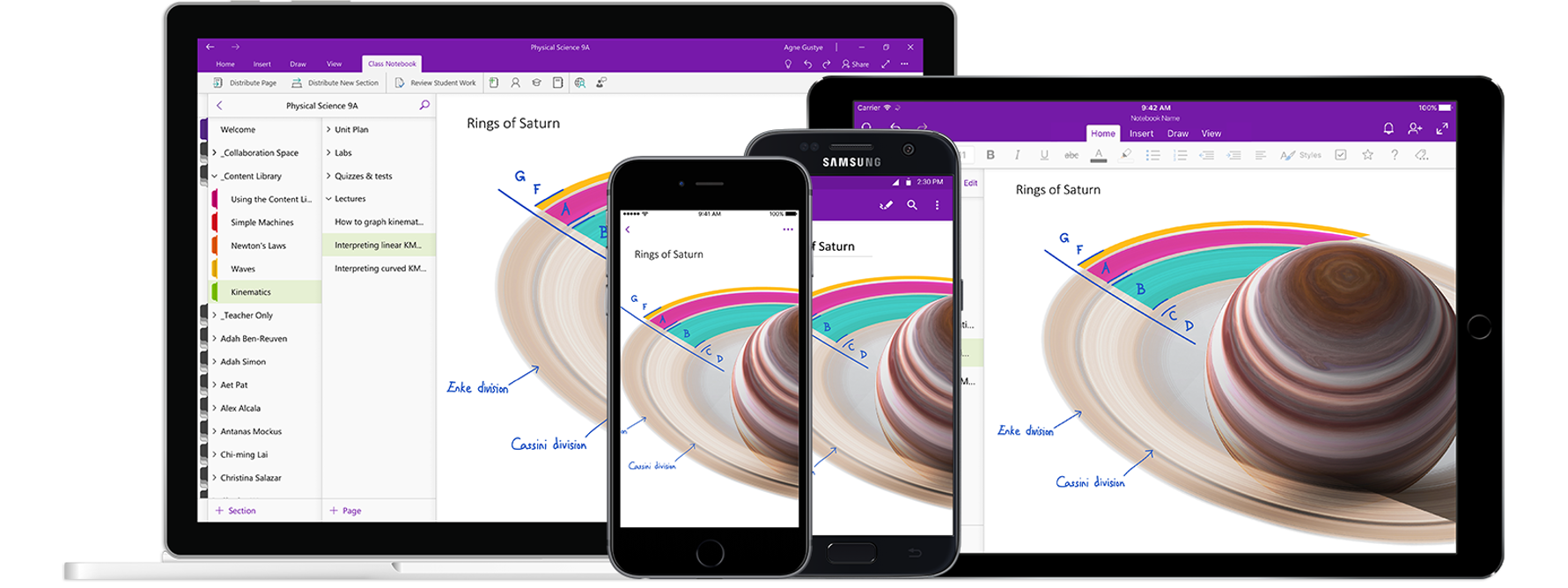
- You can easily navigate and surface your notes by categorizing them with tags. Mark them as Important, To-Do, or use custom tags to group together notes even if they belong to different hierarchies.
- If you’re more of a ‘take-handwritten-notes’ type of person, you may find OneNote quite handy. You can draw and annotate your notes using a stylus or a finger and later convert them to typed text.
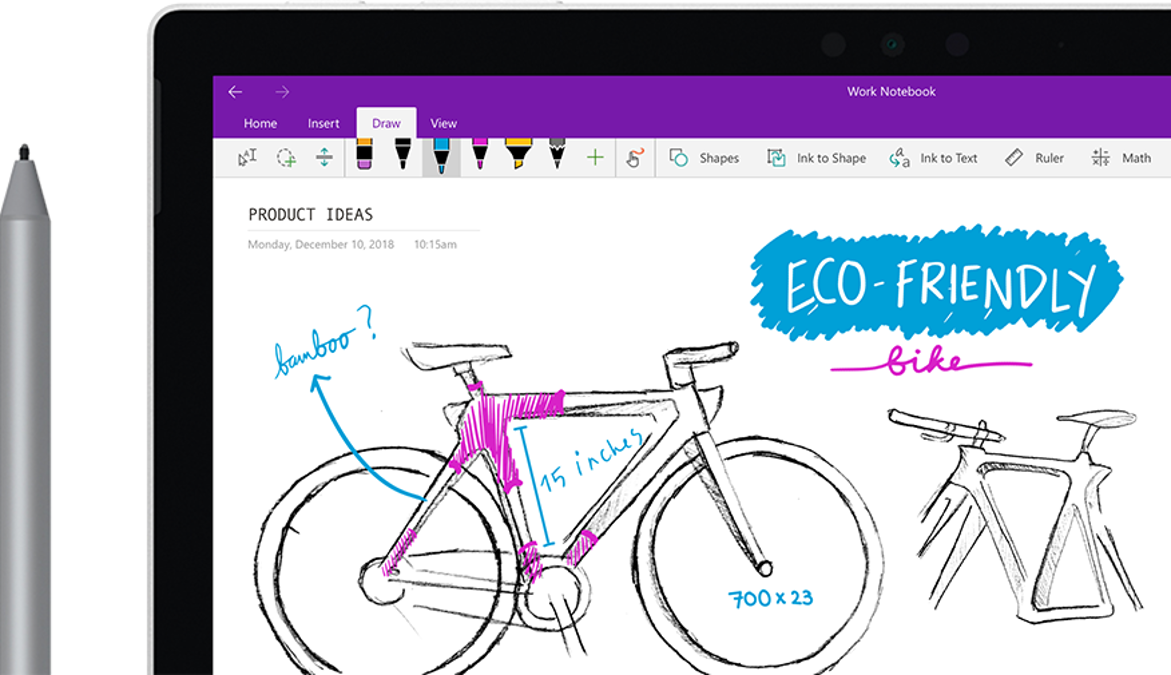
- OneNote supports various multimedia formats, allowing you to insert in your notes various files. You can add video, audio, pdf files, images, and other files. Moreover, with OneNote you can record audio or video right inside your notes and convert your speech into text.
- You can also use OneNote Web Clipper to clip and save content from websites, add screenshots. Moreover, you can extract text from images.
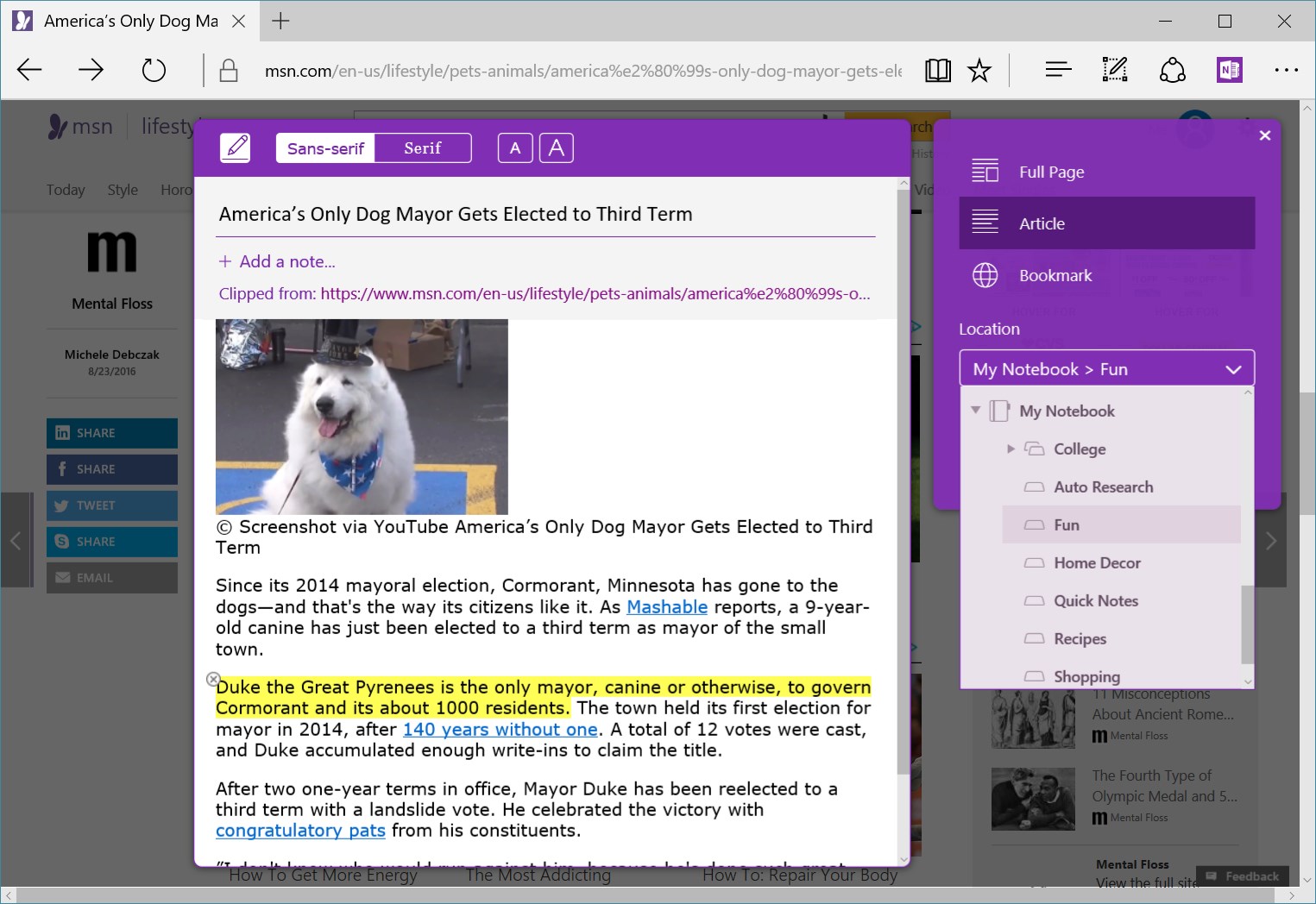
OneNote has so many useful features that once you get a hang of it, it’ll become your favorite personal organizer tools.
How to use OneNote in Microsoft Teams?
Add OneNote in Microsoft Teams
To add OneNote in Teams, navigate to the team and the channel where you wish to add it. Then, click +Add tab button and choose OneNote app. You will be given the following options:
- select a notebook among existing ones
- create a new notebook
- insert a link to an existing notebook.
FYI: Each team has a default notebook in OneNote. Your team members can use it to organize their work, store ideas and best practices, organize campaigns, etc. If you don’t have a notebook that you want to use to collaborate with your team yet, we recommend using the pre-existing one.
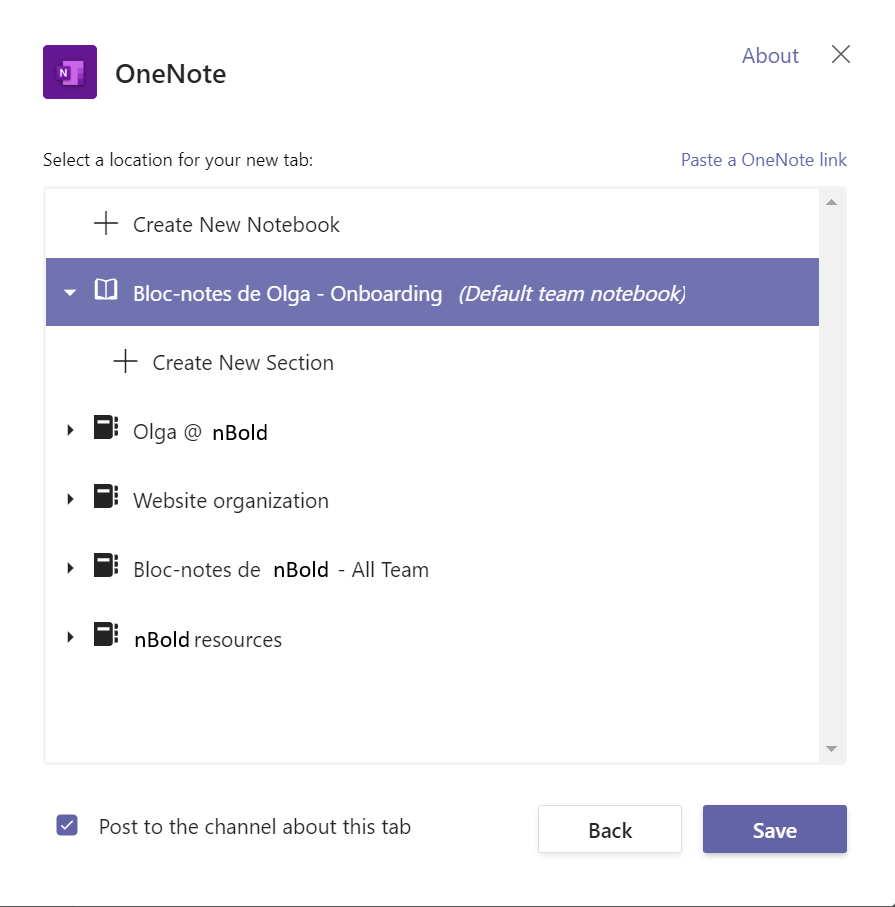
You can choose to add a section of the notebook, or even a page of the section as a tab in your channel.
The option you choose will show up on your top bar, ensuring easy access to it for your team members. You can add the same notebook in multiple teams and channels.

How OneNote works in Microsoft Teams
When you open your notebook in Teams, you see the web interface of the app. It gives you access to some of its basic capabilities. For more functionalities, you may want to open its desktop version. If you want to learn about the differences between the web and desktop versions, you may find it here.
Here’s how you can use OneNote in Microsoft Teams:
Add sections and pages
Once you’ve created your OneNote notebook, you can add sections and pages to organize your notes. To add a section, click on the ‘+’ icon next to the notebook name and select ‘Add Section.’ To add a page, click on the ‘+’ icon next to the section name and select ‘Add Page.’
Share the notebook
You can share the OneNote notebook with other team members by clicking on the ‘Share Notebook’ icon in the upper-right corner of the notebook. You can choose to share the notebook with specific team members or with the entire team.
Collaborate on notes
Once you’ve shared the notebook, you can collaborate on notes with your team members. Everyone can edit and contribute to the notebook, making it a great tool for brainstorming and collaboration. You can also use @mentions to alert team members when changes are made to the notebook.
Use OneNote to manage tasks
OneNote can be used as a task management tool. You can create to-do lists, assign tasks to team members, and track progress. You can also use OneNote to store important project-related documents, such as meeting notes, agendas, and project plans.
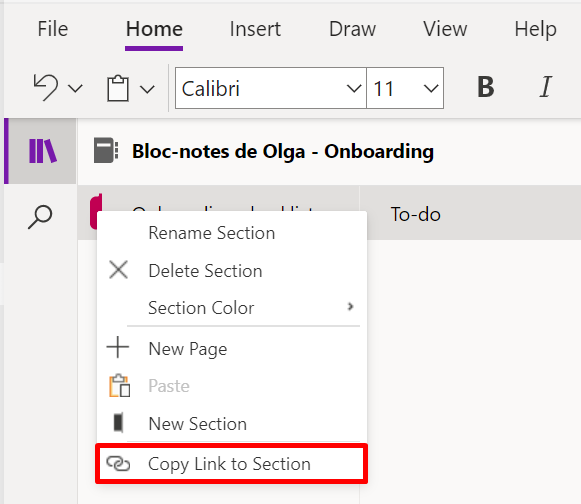
OneNote also has security measures in place to protect your sensitive information. So, you can make sure all confidential data will stay safe. It enables users to set up a password for individual sections, ensuring that only the right people have access to them.
The feature is available only in the desktop version of the app. To enable it, right-click on the section you want to protect and select Password Protect This Section.
You can use OneNote as a knowledge base for your entire company, department, or team where you work together on key ideas. Below we will list some use case examples for OneNote that you can implement in your work routine.
Microsoft Teams and OneNote: use cases
1. Meeting minutes
Probably one of the most common uses of OneNote in Microsoft Teams is taking meeting notes. To automate this process, you can use the Outlook and OneNote integration.
When you open your notebook in Teams, click Insert > Meeting notes. You will be asked to sign in with a Microsoft account. Once that is done, you will get the list of your upcoming meetings. Once you click on the right meeting, it will automatically import its details. You’ll see the meeting date, location date, invitation message, the list of participants and a note-taking part. Once you’re finished, you can email the notes to meeting participants through a link provided.
2. Sales Playbook
You can use OneNote in Microsoft Teams as a repository for guidelines in your organization. For example, you can develop an entire Sales Playbook with best practices, tactics, and strategies your sales reps can use during different stages of the sales process. Due to OneNote hierarchical level, you can divide your playbook into various sections, section groups, pages, and subpages, keeping your playbook well-structured and easy to navigate.
→Download White Paper: How to Use Microsoft Teams for Sales Management
3. Administrative data
OneNote is an excellent document management tool that you can leverage for storing administrative data. That can be employee information, office inventory, procurement details, organizational rules and policies, etc.
4. Contact details
It’s worth considering using OneNote for storing information about your prospects, clients, partners, vendors, suppliers, etc. For example, you can dedicate a separate page for each of your key accounts with subpages such as contact info, meeting notes, case, etc. depending on the nature of your interactions.
4. Resources
Use OneNote to store information about useful resources that can benefit your team. That may be training materials, courses, e-books, articles, infographics, webinars, etc. Possibilities are endless!
5. Ideas
Use OneNote during your brainstorming sessions – be that online meetings or office gatherings. Everyone in your team can have their OneNote notebook open on their device and contribute to idea sharing. You may want to add stick-it notes, draw, handwrite, type. This way, you’ll make sure all the brilliant ideas will be captured.
Similarly, each team member can add their ideas at their own rhythm, working asynchronously from others. Shared notebook will guarantee everyone will be able to see their contribution and elaborate on details.
6. Project Management
OneNote can be used as a project management tool, allowing you to track project progress, assign tasks, and keep all project-related information in one place. You can create a separate notebook for each project, with sections for tasks, timelines, budgets, and resources. This makes it easy for team members to collaborate and stay on top of project details.
7. Research
If you’re working on a research project, OneNote can be a great tool for collecting and organizing information. You can use OneNote to store research articles, notes, and data, and share this information with other team members. This can be especially useful if you’re working on a team project and need to share information with others.
8. Training and onboarding
OneNote can be used to create training materials for new employees or for ongoing employee development. You can create a notebook with sections for different topics (e.g., sales training, customer service training, etc.), and add pages with training materials, videos, and quizzes. This makes it easy for employees to access training materials and track their progress.
9. Marketing campaigns
OneNote can be used to plan and execute marketing campaigns. You can create a notebook for each campaign, with sections for different tasks (e.g., social media, email marketing, etc.). You can also use OneNote to track campaign metrics and analyze campaign performance.
10. Personal notes
Finally, OneNote is an excellent personal organizer tool. Use it to organize your own day-to-day, weekly, and monthly tasks, add motivational quotes, ideas for game nights, favorite recipes, or vacation plans. Just make sure to keep your notebook private 😊
How to create teams with OneNote from Collaboration Templates
OneNote can become a knowledge repository for your organization. So, you may want all or some of your teams to have specific notebooks at hand to guarantee easy and quick access to key data.
Link to a single notebook
For example, if your organization uses OneNote to create Execution Playbooks – let’s say, for sales – you may want all your sales teams in Microsoft Teams to have a OneNote tab linking to this specific notebook.
This is possible with Microsoft Teams Collaboration templates. Templates are pre-built definitions of team structure that allow to create teams faster with already established settings, pre-defined channels (both standard and private), files, tabs with apps and other content. In this case, you can add OneNote notebooks, pages, or sections at the template level.
You can create templates for teams that correspond to your organization’s structure – departments, business units, agencies, sites, etc. – or for repetitive processes – projects, campaigns, events, accounts, cases, and so on. Then, use these templates to create customized teams with all the content already included and the right governance policies pre-configured.
OneNote templates
You may also want to have a OneNote template that you could copy and paste to your teams. For example, you may want all your project management teams to have a pre-built notebook with already pre-built sections and pages for meeting notes, best practices, useful resources, etc.
You can also do that with Collaboration Templates.
Create Collaboration Templates with a pre-built structure, tools, and essential content in Microsoft Teams
Download our step-by-step guide on how to create Collaboration Templates for Microsoft Teams
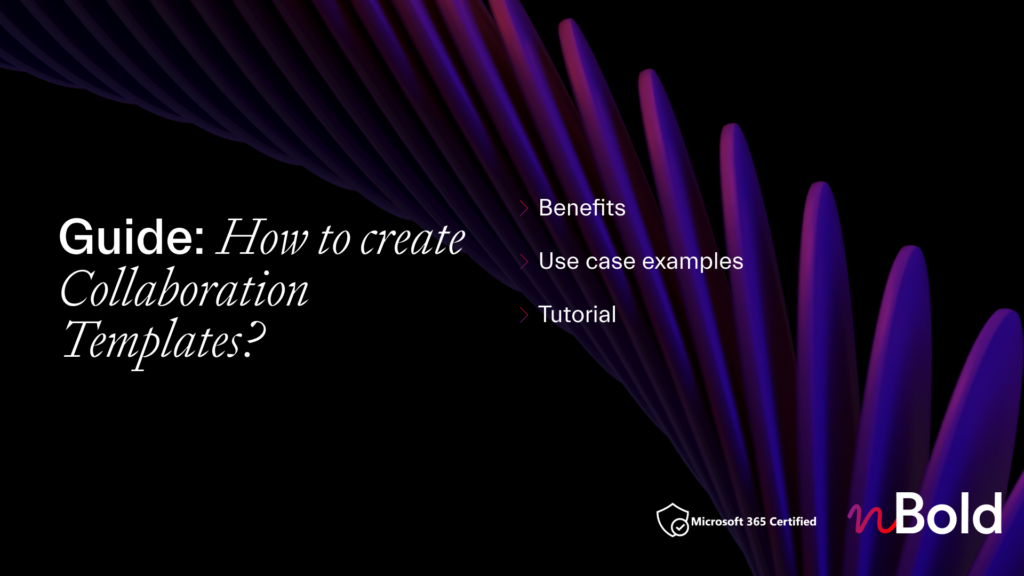
To do so, create an original team on which you’ll base your template. Customize channels and add relevant information. Upload the OneNote notebook that you want to use as a template to this team in Microsoft Teams. The copy of this notebook will be added to all new teams. Plus, you can create a new tab in the channel of your choice and pin the right notebook for linking all your teams to it, as we discussed in our Playbook example.
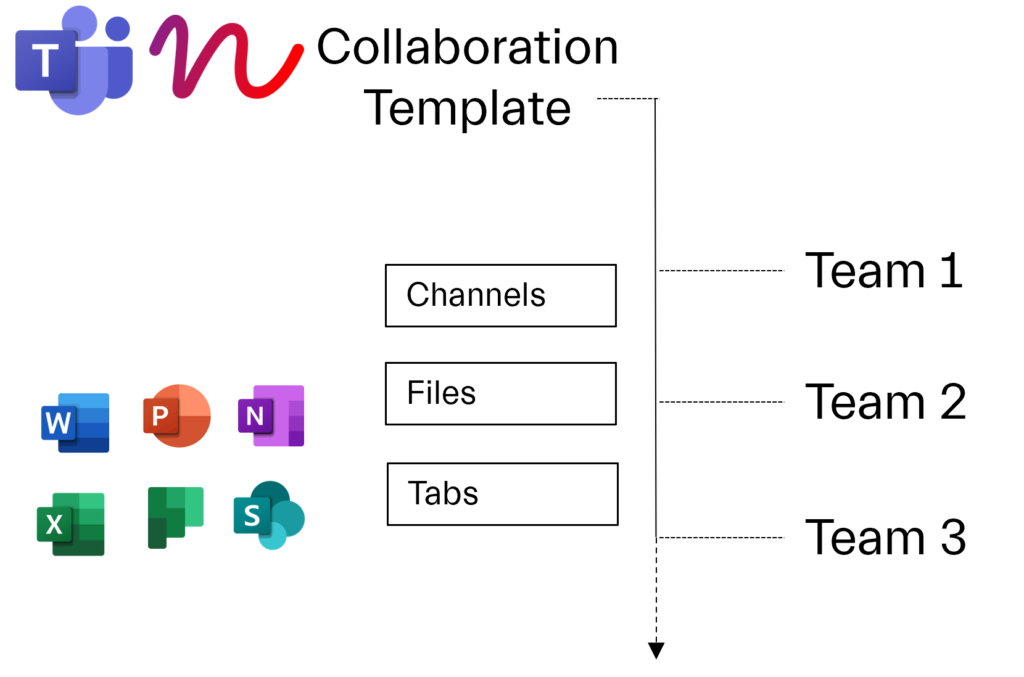
Then, you can turn this team into a template. With the nBold app that you can download from Teams AppSource, click on +New Template, select the original team you just built, and configure governance policies according to your business needs and click on Save.
Your template is created! Now whenever your users use this template to create new teams, they will automatically get the OneNote notebook that you pinned as a tab in the original team. Plus, they will get a copy of the notebook that you added as a file. Later, if needed, you can add this file as a tab in the right channel.
Learn more about how to build templates with files and folders.
Talk to our team to learn more about Collaboration template capabilities and see how templates work in action.
